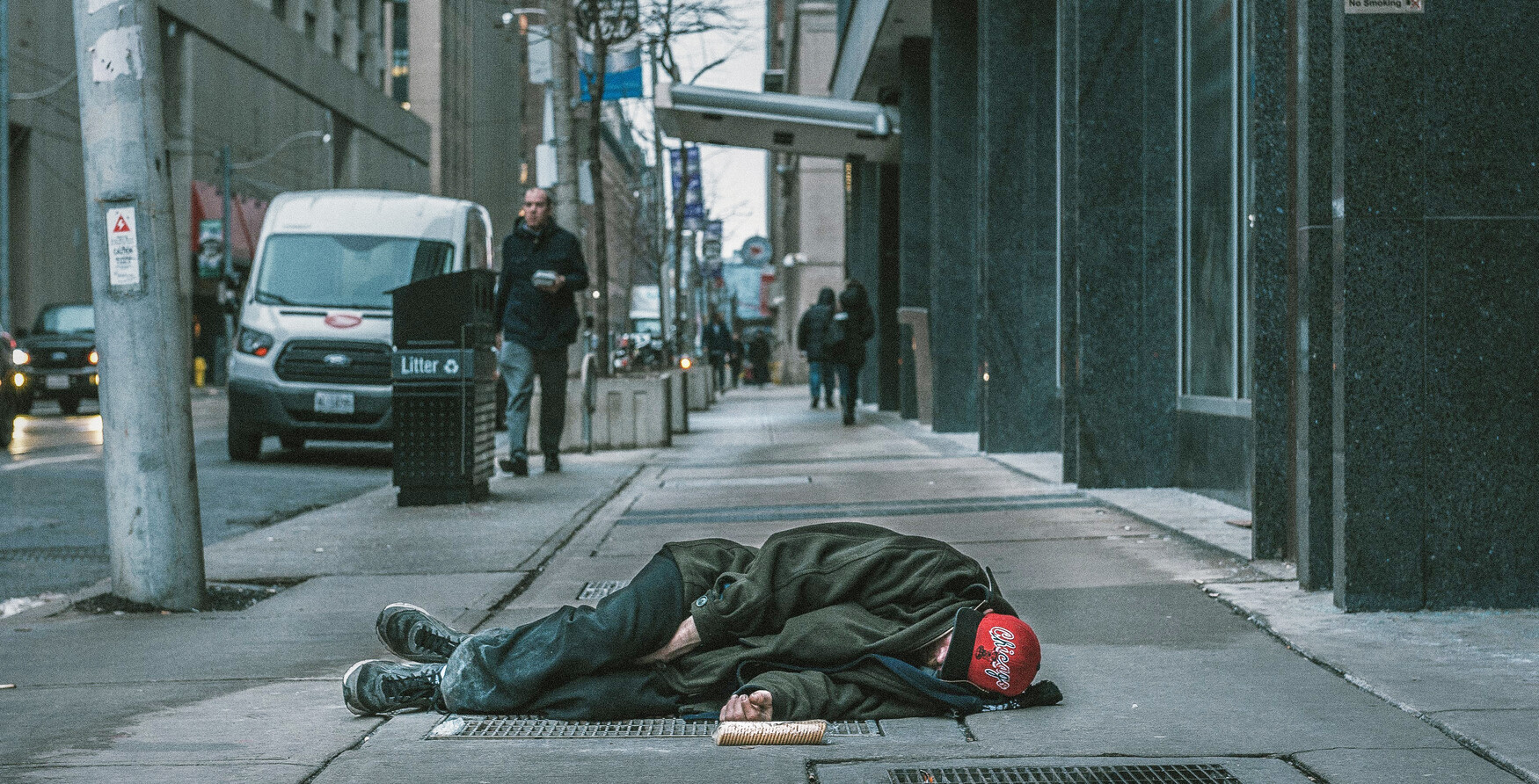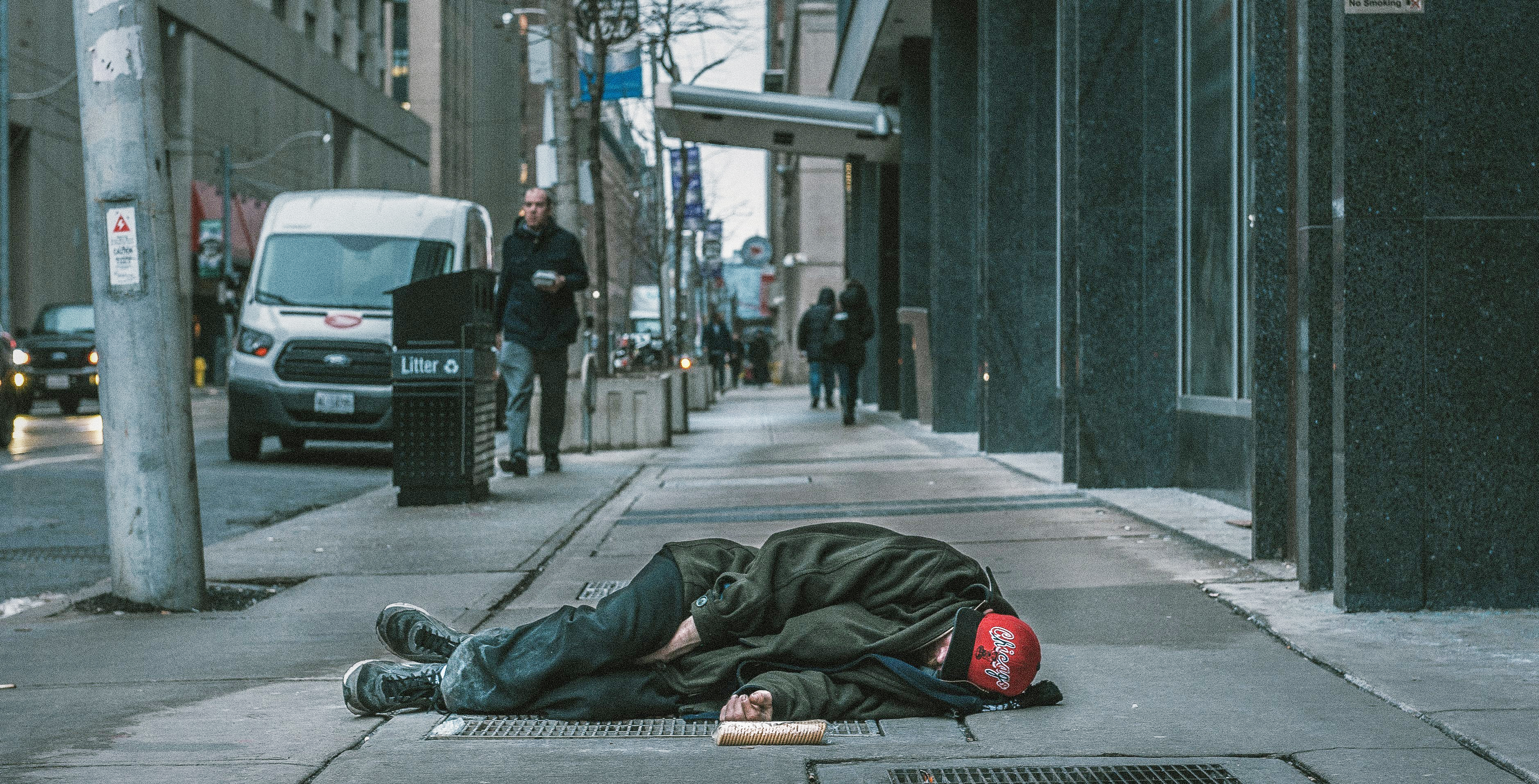Main Second Level Navigation
- Welcome
- Why Toronto?
- History of the Department
- Vision & Strategic Priorities
- Our Leadership
- Our Support Staff
- Location & Contact
- Departmental Committees
- Department of Medicine Prizes & Awards
- Department of Medicine Resident Awards
- Department of Medicine: Self-Study Report (2013 - 2018)
- Department of Medicine: Self-Study Report (2018 - 2023)
- Communication Resources
- News
- Events
The Unseen Victims of COVID-19: How the Virus Is Impacting Homeless Populations

Ciara Parsons
 While COVID-19 outbreaks continue to overwhelm long-term care facilities across Ontario, some experts warn that homeless shelters may soon become a new epicentre for uncontrolled spread if left unchecked.
While COVID-19 outbreaks continue to overwhelm long-term care facilities across Ontario, some experts warn that homeless shelters may soon become a new epicentre for uncontrolled spread if left unchecked.
Dr. Stephen Hwang, a specialist in general internal medicine and professor in the Department of Medicine at the University of Toronto, has almost 30 years of experience conducting research and providing care to people experiencing homelessness. He also serves as the director of the MAP Centre for Urban Health Solutions at St. Michael’s Hospital, and says homeless populations and shelters require more help to curb the spread of COVID-19.
Hwang discusses why people who are homeless require more attention from policymakers, the potential consequence of COVID-19 outbreaks in shelters and why housing is fundamentally connected to health.
 What led to your interest working with homeless and vulnerably housed populations?
What led to your interest working with homeless and vulnerably housed populations?
I wanted to use my abilities as a physician to help those who are most in need and to make a difference. I have always felt that it is really important to ensure that people who are often forgotten and among the most marginalized in our society can get the best possible care.
Why are homeless populations at a greater risk of contracting COVID-19?
People who are homeless sleep in shelters that are often very crowded, with beds close together. They can be in close contact with hundreds of other people in common spaces and shared bathrooms. These kinds of crowded environments are the perfect setting for the spread of infectious diseases like COVID-19.
What are the short-term and long-term implications of unchecked spread of COVID-19 among homeless people, and in shelters?
We are seeing significant outbreaks in a number of homeless shelters, both in Toronto and in other jurisdictions. We have also seen that when COVID-19 does enter a shelter that the infection rates can be extremely high — in some cases, more than 50 per cent. There is a parallel to long term care facilities, where very large clusters of cases can occur, even when we are controlling the spread of COVID-19 in the general population.
When people are living in close quarters, it makes it very hard to control the virus. There are enormous risks for people living in homeless shelters, and unless we control the spread of disease in those settings, we will not be able to control COVID-19.
How do you think the province of Ontario could have improved its response to COVID-19?
We were slow to act on many things — we were slow to realize that long term care facilities were going to become an epicenter for spread of COVID-19. This is where a lot of our efforts to slow the spread of COVID-19 have been focused recently.
In terms of homeless populations, we were a bit slower than we should have been in our efforts to start screening people in shelters, and we are going to have to greatly expand that testing if we want to understand the dimensions of the problem and how we can control it.
We also really need to create additional shelter spaces so that people can be physically distanced. Currently, not every shelter is able to place people more than two metres or more apart from each other when they are sleeping. And lastly, we need to create more housing for people so that we do not have hundreds or thousands of people packed into our shelters.
Ontario recently extended priority testing to include homeless populations and those who work in shelters. How will early testing impact how we control COVID-19?
Well, it is really just the first step to controlling it. We need to locate people who are positive or have been exposed to COVID-19 and create enough space to appropriately isolate those individuals and make sure their needs are met during the isolation period. This is an ongoing effort that St. Michael's Hospital is contributing to, partnering with a number of local organizations, including the City of Toronto and a physician group known as Inner City Health Associates, to make that happen.
When homeless individuals who live in shelters are tested for COVID-19, how are they contacted to let them know about their results?
When people are screened, they remain at the shelter and the results are conveyed back to the shelter. That way, staff can then inform the residents who are positive and make appropriate arrangements to move them to a site where they can be safely isolated.
Do you think that the pandemic has put a spotlight on the issues that homeless populations are facing and the gaps within the shelter system?
Absolutely. I think COVID-19 has really laid bare problems that we have had for years, but now have become a looming crisis for everyone. So, suddenly a problem that we used to be able to ignore because it only affected people that were out of sight and out of mind, is now something that threatens our ability to control the pandemic in our city. For example, shelters in Toronto have been overcrowded for a long time, with people packed together in close proximity and many nights when it was difficult to find an available bed. It is only after COVID-19 struck that we realized the urgent need to create more shelter space so that people could spread out and stay healthy.
When COVID-19 has subsided, do you think there will be any changes to the shelter system or how homelessness is addressed?
I hope that we do not go back to the status quo and that we take advantage of this opportunity to fundamentally change how we address homelessness. Ideally, this crisis would push us to realize that we can eliminate shelters entirely by housing people.
To address homelessness, we need specialized programs and sites to provide the care and services that they need. The Housing First approach has shown that people who have been homeless for years can be successfully housed if they receive the right supports. The housing can be in regular apartment units, or in specialized buildings for those who need more intensive case management supports.
COVID-19 has demonstrated how important having a place to live is and how it impacts health. In just a few weeks, our city has had to create all these new spaces for homeless individuals to stay and self-isolate. The need for housing was always there, but this necessity has been amplified by the pandemic. It is an unprecedented moment and an opportunity to completely re-think how we can meet the needs of people experiencing homelessness.

